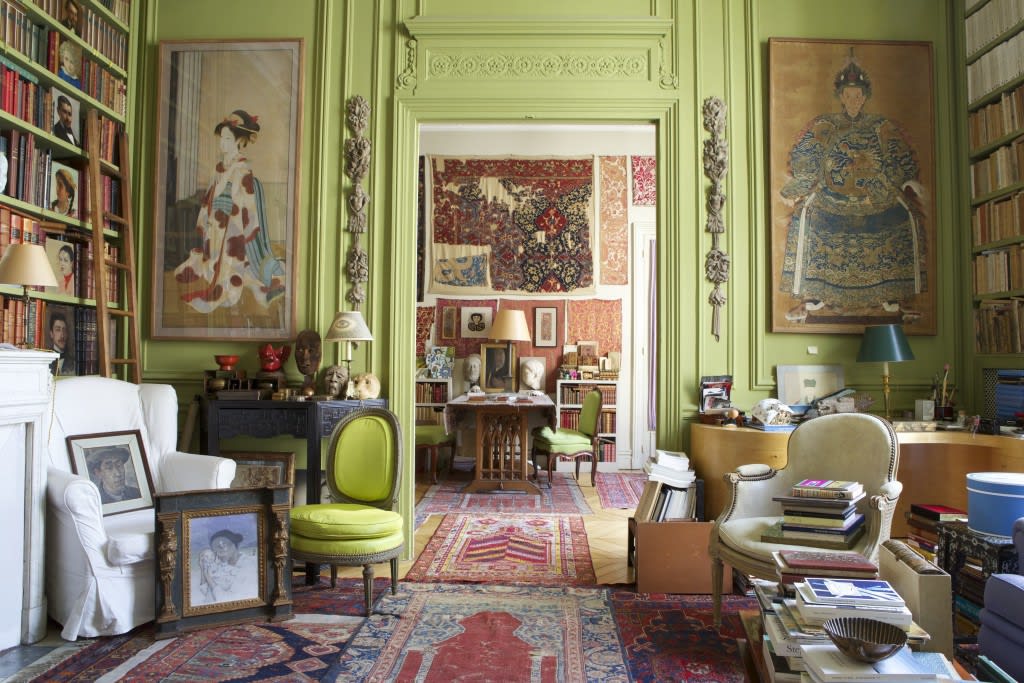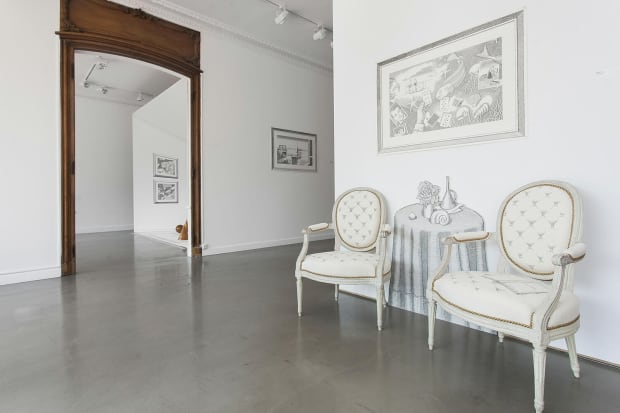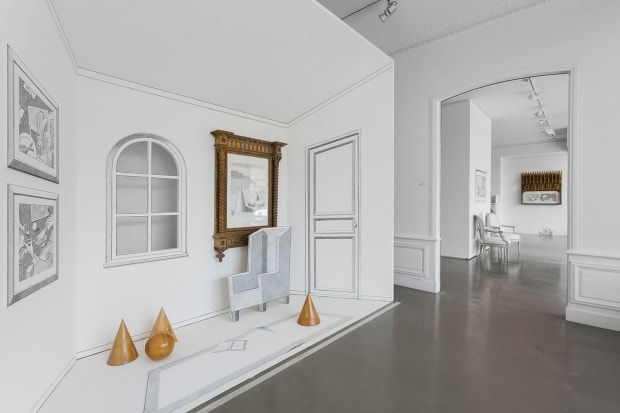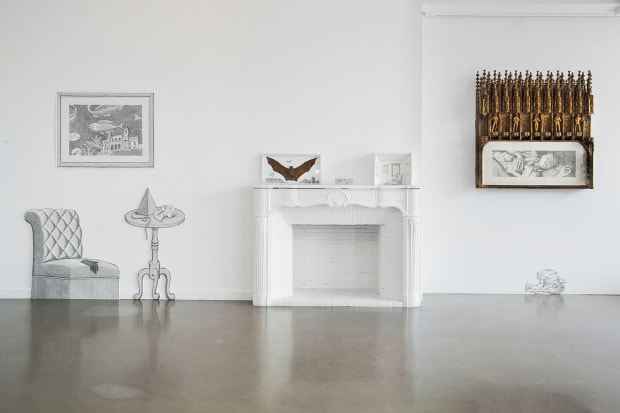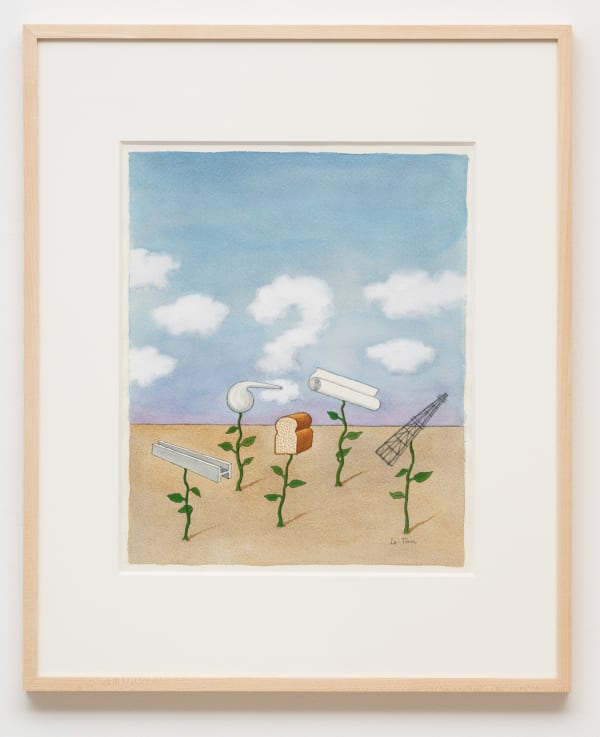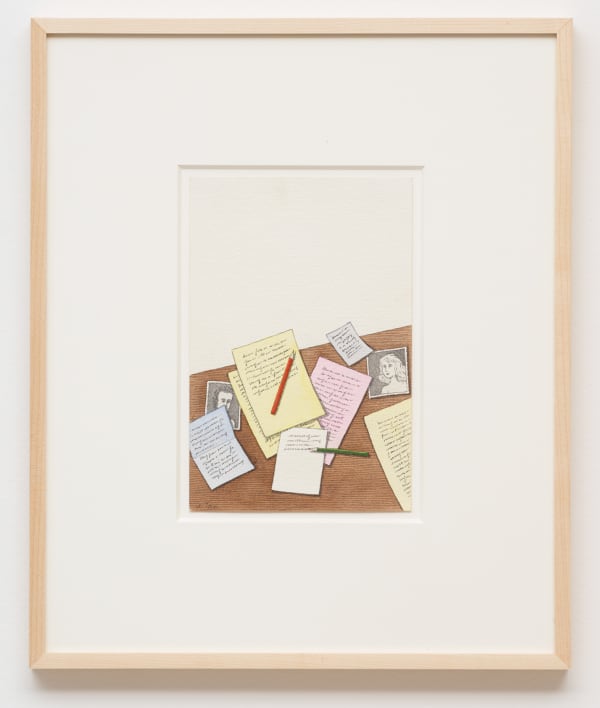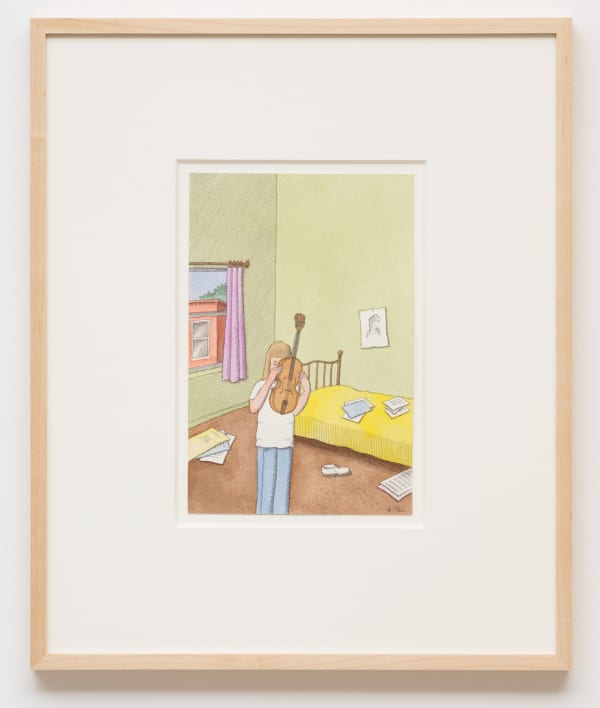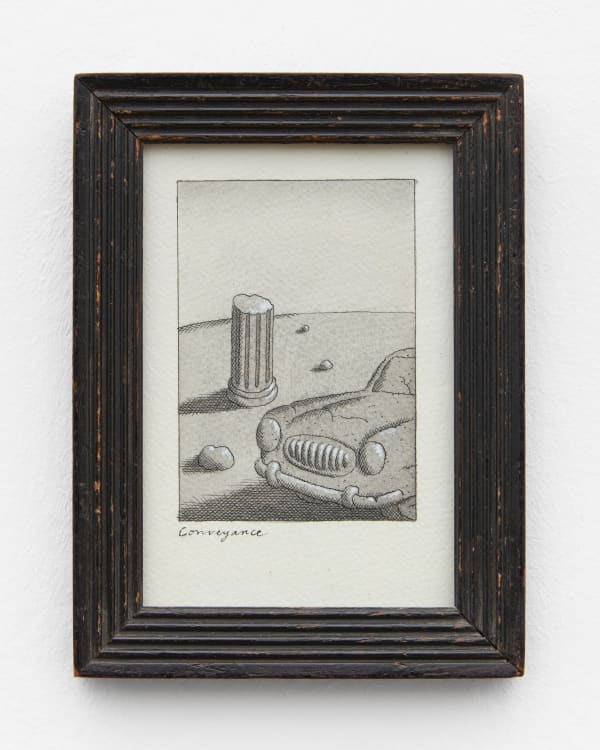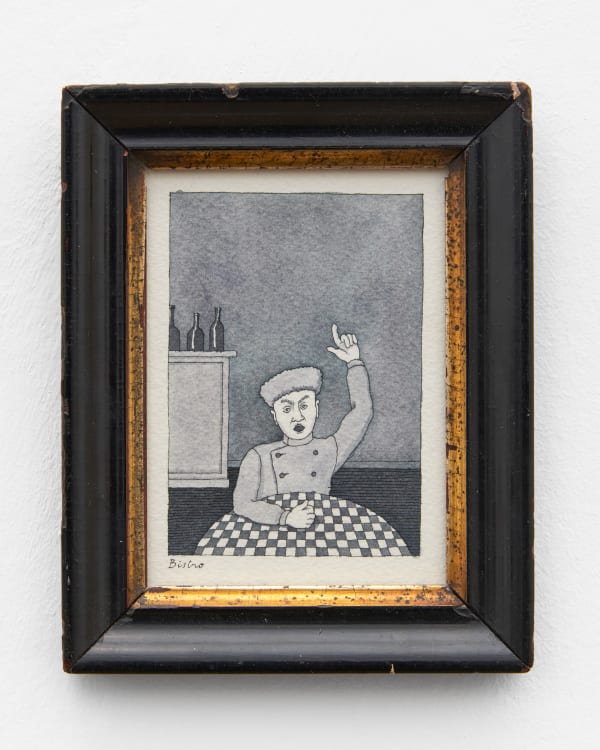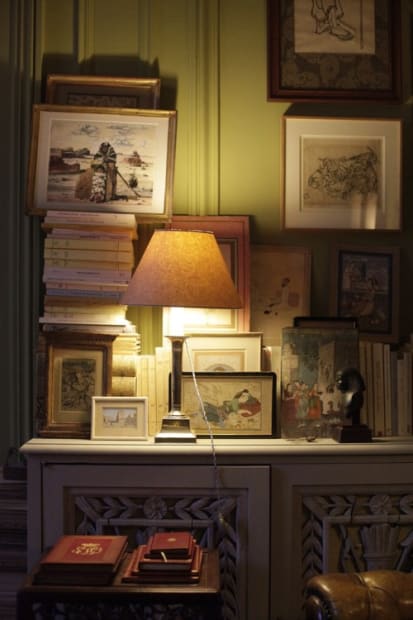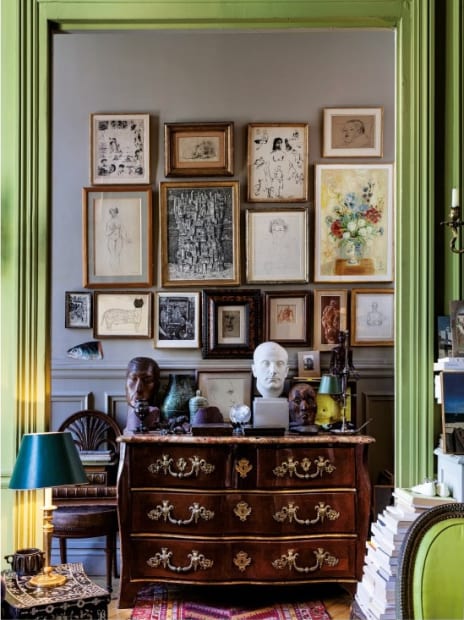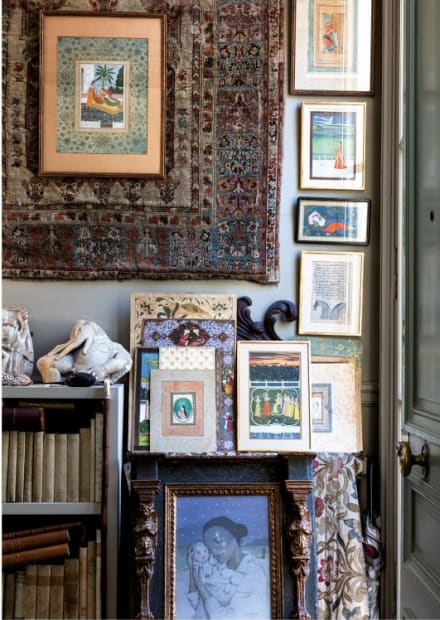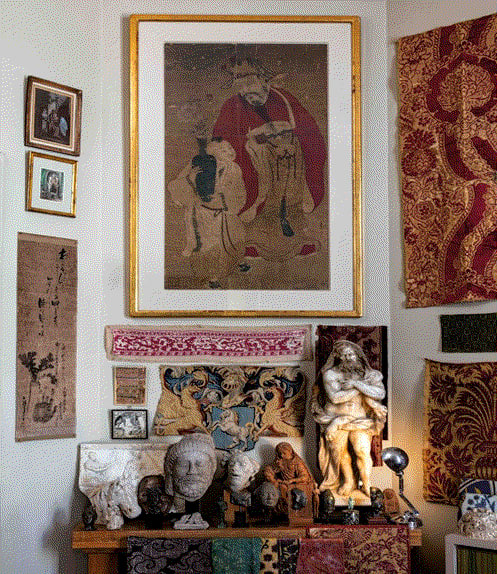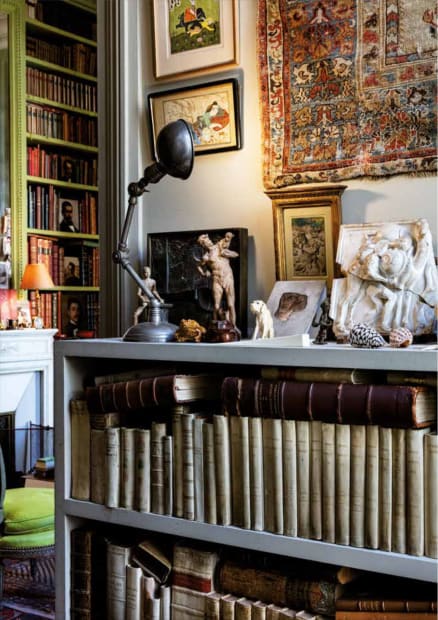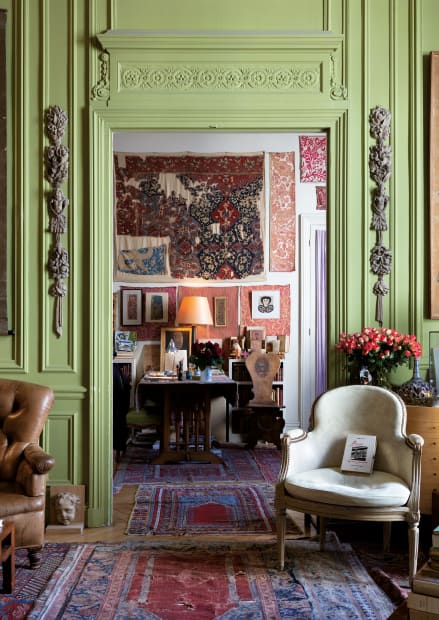-
Pierre Le-Tan: Early Works 1960s - 1990s
Frieze Masters 2022 -
FRIEZE MASTERS 2022
REGENT'S PARK, LONDON, 12 - 16 OCTOBER 2022For Frieze Masters 2022 Tristan Hoare is delighted to present Early Works 1960s — 1990s, a selection of drawings by Pierre Le-Tan. This is the first exhibition the gallery will be presenting since Le-Tan's death in 2019, in collaboration with the family of Le-Tan. The aim is to continue the artist’s legacy and tell his story. With this in mind, we are presenting a group of his private drawings as well as his commercial work, including a rare group of studies for The New Yorker magazine, carefully curated by Le-Tan’s family.
-
 Artist Pierre Le-Tan at work in his Paris apartment.Photo: Courtesy of Tristan Hoare Gallery
Artist Pierre Le-Tan at work in his Paris apartment.Photo: Courtesy of Tristan Hoare Gallery -
One of Paris’ most celebrated illustrators and with a career spanning 50 years, Pierre Le-Tan created remarkable illustrations of nostalgic and timeless characters and interiors, quietly capturing snippets of everyday still lives — a desk of unfinished letters, an open door and a fallen boot, a lit match, an aeroplane apparent through an apartment window.During his lifetime Le-Tan drew tirelessly, creating a closely observed universe spiced with humour with a hint of surrealism. His precise, meticulous scratchings of India ink and macaron palette of watercolours, which he developed from an early age, became his signature style.
-
-
‘I have been going to the Royal Academy since the late 60s and am honoured to be working on this project celebrating one of Europe’s great cultural institutions,’ said Le-Tan. ‘I’m excited to be collaborating with Fenwick of Bond Street to bring the Royal Academy’s history to life.’‘Fenwick have a long history of working with Illustrators dating back to the early 1900’s,’ added Leo Fenwick. ‘As a true master of illustration, we thought Pierre Le-Tan the perfect partner for the Royal Academy’s 250th Anniversary.’
-
NEW YORKER COVERS
-
The first group of deawings on display is a wonderful selection of studies for The New Yorker magazine. The New Yorker covers have always been keen observations of contemporary culture. Their weekly renderings are still widely recognised as visual interpretations of the day's most pressing issues. This was an important relationship for Le-Tan and in total he designed 18 covers for the magazine.
Le-Tan first came to New York in July 1968 and was encouraged by his mother’s American friend David Rowlandson Preston - a distant descendant of the 18th century English caricaturist - to send some of his drawings to The New Yorker. Preston had created a few covers for The New Yorker himself and was a friend of the art director. The magazine bought some of Le-Tan’s early drawings that ended up as vignettes used to enliven the text pages of the magazine, and following a meeting with Jim Geraghty, the art editor of The New Yorker, Le-Tan managed to sell two front covers in a single go.
-
Le-Tan’s first cover for The New Yorker was published on Valentine’s Day in 1970, when he was just 19, showing a blue room with an open window framing a red floating heart. Some 20 covers followed, with subjects ranging from crockery arranged on a shelf (June 14, 1982) to a sedan navigating a dark and lonely road during pelting rain (April 14, 1980), in Le-Tan’s inimitable cross-hatched watercolour style. Le-Tan very rarely drew people for The New Yorker covers, preferring quiet scenes such as empty rooms, cityscapes or still lives.
-
Studies for The New Yorker
-
Le-Tan worked for practically every publication in New York but continued to collaborate with The New Yorker on a constant basis. According to Le-Tan, in the 1970s and 80s the covers of The New Yorker had one particular characteristic, in that they bore no particular relation to the contents of the magazine. They were simply an amusing drawing or an image that pleased both Geraghty and the editor, William Shawn. The New Yorker valued excellence above all else, thus everything, from the illustrations to the articles, were done on a hand-made basis, and never in a hurry. This suited Le-Tan’s quiet, meditative style perfectly.
-
BOOK COVERS
-
The second group is a series of book covers that Le-Tan designed in the 1980s and 90s. His close friendship with Patrick Modiano resulted in a number of collaborative works, with Modiano’s melancholic prose serving as the perfect subtext to Le-Tan’s reflections of a forgotten Paris, full of strange and endearing characters.
-
On show will be one study for the cover of Modiano’s Fleurs de Ruine (1992), as well as covers for novels by Nigel Williams, Pierre Herbart, Peter Carey, Garrison Keillor, Bernice Rubens, Deborah Eisenberg and Sam Shepard, among many others.
-
Studies for Book Covers
-
EARLY DRAWINGS
-
The third category is a group of black and white drawings from the 1960s to the 1990s. These are all personal drawings, varying in size and subject matter. Some are more like sketches or doodles while other are grander, more complete works with his signature black border and text.
They are presented in antique frames, a way in which Le-Tan often showed his works. He was always on the look-out for interesting antique frames for which he would specially draw a work, and the combination elegantly encapsulates the artist and the collector.
-
-
-
Exhibited Works
Frieze Masters 2022: Pierre Le-Tan: Early Works 1960s - 1990s
Past viewing_room


